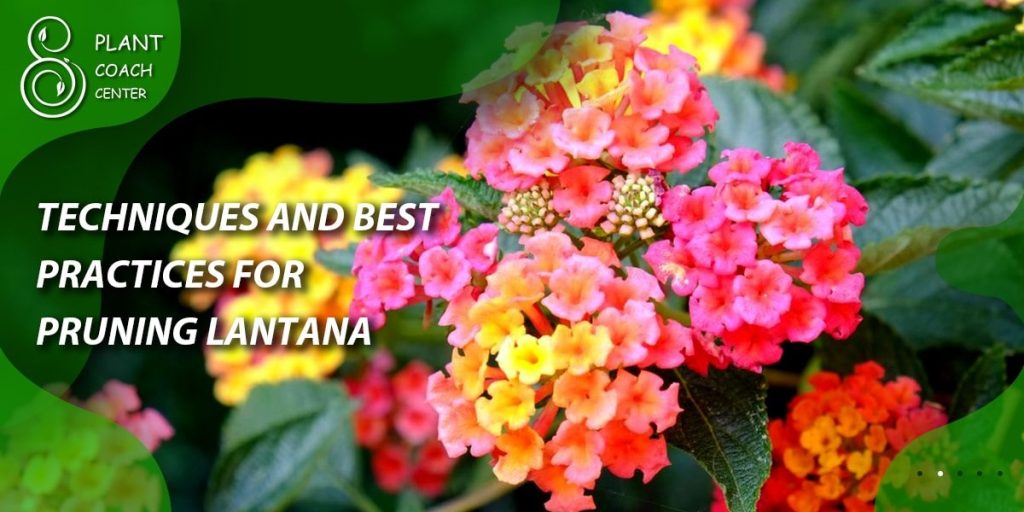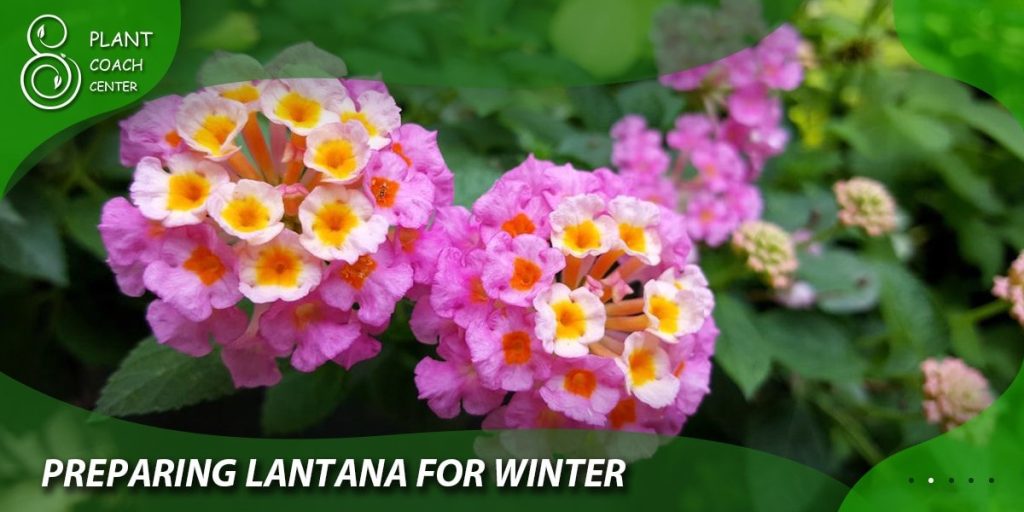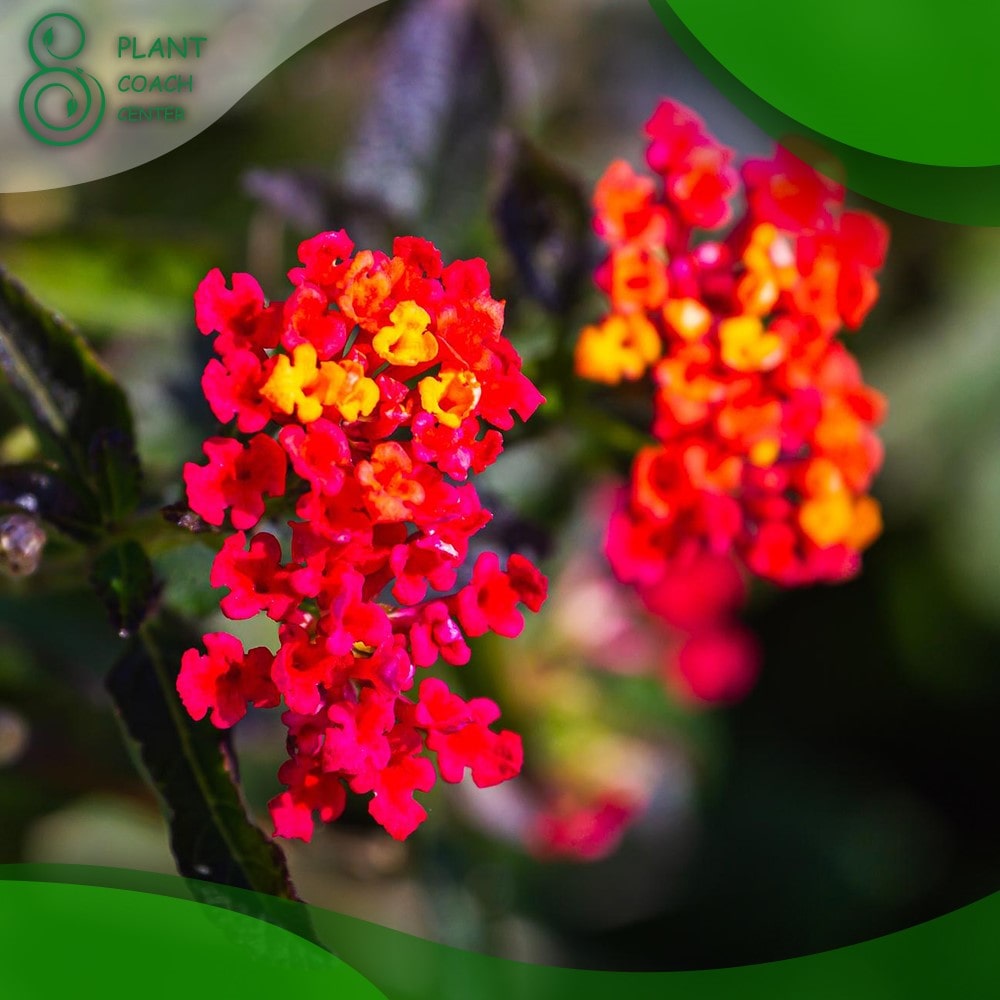When to Cut Back Lantana
Lantana plants are a true delight in any garden or landscape. Their vibrant colors and lovely scent attract pollinators like butterflies and hummingbirds, adding life and beauty to your outdoor space. However, to ensure that your lantana plants thrive and continue to bring joy year after year, it’s crucial to provide them with proper care and maintenance.
One essential aspect of lantana care is knowing when to cut back the plants, especially as winter approaches. In this comprehensive guide, we will explore the art of plant coaching and address common lantana problems, focusing on when and how to cut back lantana for winter.

Understanding Lantana Plants
Before we dive into the details of pruning lantana, we must have a solid understanding of the plants themselves. Lantana plants are native to tropical and subtropical regions and are known for their vibrant clusters of flowers. They come in various varieties, including dwarf and trailing types, with different growth habits and sizes. Lantana plants require a sunny location and well-drained soil to thrive.
The Importance of Pruning Lantana
Regular pruning is vital for the overall health and appearance of lantana plants. Pruning helps maintain the desired shape, control the size, and promote better blooming. By removing dead or diseased branches and stimulating new growth, you can ensure that your lantana plants remain vigorous and beautiful throughout their lifespan. However, we’ll address some misconceptions about lantana pruning later to clear up any confusion.
Identifying the Right Time to Cut Back Lantana for Winter
Identifying the right time to cut back lantana for winter is essential to ensure the health and survival of the plants during the colder months. While the general recommendation is to prune lantana before winter sets in, it’s important to consider several factors to determine the specific timing for your plants.
Understanding Lantana’s Growth Cycle
Lantana plants have a distinct growth cycle consisting of active growth and blooming during the warmer months, followed by dormancy or reduced growth during winter. Familiarizing with this growth cycle is crucial to determine when to prune.
Signs that Indicate the Need for Pruning
Observing your lantana plants closely can provide valuable cues about when they need pruning. Look for the following signs:
- Leggy or Lanky Growth: If your lantana plants have become excessively tall or have long, spindly stems, it may indicate that they need pruning. Cutting back the plants will promote bushier growth and prevent them from becoming too straggly.
- Faded or Spent Blooms: As fall approaches, the vibrant blooms of lantana may start to fade or decline. Pruning the plants at this stage will help rejuvenate them and encourage new growth and blooming when the next growing season arrives.
- Disease or Pest Issues: If you notice any signs of diseases or pest infestations, such as discolored or damaged leaves, it’s advisable to prune affected branches promptly. Removing diseased or infested parts can prevent the spread of problems and help the plants recover.
Factors to Consider for Timing
Several factors come into play when determining the ideal timing to cut back lantana for winter:
- Geographic Location: Consider your region’s climate and the typical onset of winter. Suppose you live in a colder climate where frost or freezing temperatures arrive early. In that case, it’s best to prune Lantana in late fall before the cold weather sets in. In milder climates, you may have more flexibility with the timing.
- Local Climate: Even within the same geographic location, microclimates can exist, affecting temperature variations. Observe the weather patterns in your specific area and make adjustments accordingly. Suppose a sudden cold snap or frost is expected. In that case, it’s wise to prune a bit earlier to allow the plants time to recover before the harsh conditions arrive.
- Growth Patterns of Lantana: Different lantana varieties may have slightly different growth habits and blooming periods. Some may bloom continuously throughout the growing season, while others may have distinct cycles. Understanding the growth patterns of your specific lantana plants will help you determine the optimal time for pruning.
By considering these factors and closely monitoring your lantana plants, you can decide when to cut them back for winter. Remember that it’s generally better to prune a bit earlier rather than wait too long, as it is crucial to give the plants enough time to recover and prepare for the dormancy period.

Techniques and Best Practices for Pruning Lantana
Pruning lantana is a crucial aspect of its care and maintenance, as it helps shape plants, control their size, and promote healthy growth and blooming. Here are some techniques and best practices to follow when pruning lantana:
Tools and Equipment
Before you begin pruning, gather the necessary tools and equipment. You’ll need a pair of sharp pruning shears or secateurs for smaller branches and stems. For thicker branches, you may require a pruning saw. Additionally, wear a pair of gardening gloves to protect your hands.
Shaping and Controlling Size
Pruning is an excellent opportunity to shape your lantana plants and control their size. Start by visualizing the desired form for your plants. Some gardeners prefer a compact, rounded shape, while others prefer a more natural, informal look. Consider the overall aesthetics of your garden and prune accordingly.
To shape your lantana plants:
- Trim the outer branches lightly to encourage bushier growth and prevent the plants from becoming too leggy or sparse.
- Remove any crossing or inward-growing branches that can hinder airflow and lead to potential disease problems.
- Make clean cuts just above a healthy bud or leaf joint to promote new growth from that point.
Removing Dead or Diseased Branches
Regularly inspect your lantana plants for dead, diseased, or damaged branches. These branches detract from the plant’s appearance and can harbor pests or diseases. Removing them will help maintain the overall health of the plant.
When removing dead or diseased branches
- Use your sharp pruning shears to make clean cuts. Cut just above the nearest healthy bud or leaf joint, making sure not to leave any stubs.
- If you encounter thicker dead branches, switch to a pruning saw and follow the same principles of clean cuts just above a healthy section.
Tips for Promoting Future Growth and Blooming
Pruning lantana properly can stimulate new growth and encourage abundant blooming. Here are some tips to promote future growth and blooming:
- Cut back the lantana stems to about half their length. Aim to leave at least two healthy leaves on each pruned branch.
- Avoid pruning more than one-third of the plant’s foliage at once. Pruning too aggressively can stress the plant and inhibit its ability to recover.
- After pruning, apply a balanced slow-release fertilizer around the base of the plants. This will provide the necessary nutrients to support vigorous regrowth and blooming.
You can maintain well-shaped, healthy lantana plants by following these pruning techniques and best practices. Remember to prune lantana plants regularly, which will help prevent them from becoming unruly or overgrown.

Preparing Lantana for Winter
In addition to pruning, taking other measures to prepare your lantana plants for the winter season is essential. Lantana is a tender perennial, and while it can tolerate some cold temperatures, it may not survive harsh winters without proper protection. Here are some steps to help safeguard your lantana during the colder months:
General Winter Care
- As winter approaches, reduce watering gradually to prevent excessive moisture that can lead to root rot.
- Keep an eye out for pests and diseases, as they can be more prevalent in indoor environments during winter. Treat any issues promptly.
Protection against Frost and Extreme Temperatures
- If you live in an area with mild winters, your lantana may survive outdoors with minimal protection. However, covering the plants with frost blankets or burlap is still advisable during severe cold snaps.
- Consider digging up your lantana plants and transplanting them into containers for regions with harsh winters. Place the containers in a cool, well-lit area indoors, such as a basement or garage, until spring arrives.
Mulching and Insulating Techniques
- Apply a layer of organic mulch, such as straw or wood chips, around the base of your lantana plants. This will help insulate the roots and protect them from freezing temperatures.
- Wrap the containers with insulation materials like bubble wrap or hessian cloth to provide extra protection for lantana plants overwintering indoors.
Common Lantana Problems and Troubleshooting
While lantana is generally a hardy and resilient plant, it can still encounter a few common problems. Identifying and addressing these issues promptly is crucial to maintaining the health and vitality of your lantana plants. Here are some of the most common problems you may encounter:
Pest Infestations and Diseases
- Lantana plants are susceptible to pests like aphids, whiteflies, and spider mites. Regularly inspect your plants for any signs of infestation, such as distorted leaves, sticky residue, or webbing.
- Diseases like powdery mildew and root rot can also affect lantana. Look for signs such as powdery white spots on the leaves or wilting foliage.
- Treat pest infestations and diseases using organic insecticidal soaps, neem oil, or appropriate fungicides as recommended.
Symptoms and Signs of Common Lantana Problems
- Yellowing or browning of leaves can indicate various issues, including nutrient deficiencies, overwatering, or fungal infections.
- Stunted growth, wilting, or drooping leaves may suggest root-related problems, such as poor drainage or root rot.
- Lack of blooming or a decline in flower production could be due to insufficient sunlight, improper pruning, or nutrient imbalances.
Effective Solutions and Treatments
- Address pest infestations promptly by manually removing the insects, spraying with soapy water, or using targeted insecticides.
- For diseases, prune affected branches, improve airflow around the plant, and apply appropriate fungicides to prevent further spread.
- Proper watering, adequate sunlight, and regular fertilization can help prevent many common lantana problems.

Maintaining Healthy Lantana Plants
Consistent care is necessary throughout the year to ensure the long-term health and vibrancy of your lantana plants. Here are some additional tips for maintaining healthy lantana:
Watering and Fertilization
- Water your lantana plants deeply but infrequently, allowing the soil to dry slightly between watering sessions. Avoid overwatering, as it can lead to root rot.
- Apply a balanced slow-release fertilizer in spring and summer to provide essential nutrients for healthy growth and blooming.
Sunlight and Temperature Requirements
- Lantana thrives in full sun conditions. Ensure your plants receive at least six hours of direct sunlight daily for optimal growth and blooming.
- The ideal temperature range for lantana is between 60-85°F (15-29°C). Protect the plants from extreme heat or cold to prevent stress and damage.
Additional Care Practices
- Monitor your lantana plants for signs of stress, pests, or diseases. Early detection and intervention can prevent major problems.
- Prune lightly throughout the growing season to maintain the desired shape and encourage continuous blooming.
Conclusion
Properly pruning lantana plants and knowing when to cut them back for winter is essential for their overall health, appearance, and long-term vitality. By following the guidelines and best practices outlined in this comprehensive guide, you can ensure that your lantana plants thrive and continue to bring beauty and joy to your garden or landscape.
Understanding the growth cycle of lantana and identifying the signs that indicate the need for pruning are fundamental in determining the right time to cut back the plants. By paying attention to leggy growth, faded blooms, and any disease or pest issues, you can make informed decisions about when to prune.
When it comes to pruning lantana, employing the appropriate techniques is crucial. Shape and control your plants’ size by lightly trimming outer branches and removing any crossing or inward-growing branches. Remove dead or diseased branches with clean cuts just above healthy buds or leaf joints to promote new growth and prevent further issues.
Preparing your lantana plants for winter involves more than just pruning. Consider your region’s climate, protect against frost and extreme temperatures, and use mulching and insulation techniques to safeguard your plants during the colder months.
Awareness of common Lantana problems and troubleshooting methods will help you address issues promptly. Watch for pest infestations, diseases, and common symptoms such as yellowing leaves or lack of blooming. You can maintain healthy lantana plants year-round by implementing effective solutions and treatments.
To ensure your lantana plants’ ongoing health and vitality, incorporate proper watering and fertilization practices. Provide them with the necessary sunlight and maintain suitable temperatures. Additionally, continue to monitor their overall health and address any issues that may arise throughout the year.
caring for lantana plants involves combining pruning techniques, preparation for winter, troubleshooting common problems, and consistent care practices. By implementing the information provided in this comprehensive guide, you can enjoy the beauty and rewards of well-maintained lantana plants, enhancing the aesthetics of your outdoor space and attracting pollinators for years to come. Remember, a little effort in plant coaching goes a long way in ensuring the longevity and vibrancy of your beloved lantana plants.
When is the best time to cut back lantana for winter?
Late fall or early winter.
How much should I prune lantana plants?
Cut back stems by half, leaving two sets of healthy leaves.
How can I protect Lantana from frost?
Cover plants with frost blankets or transplant them indoors.







